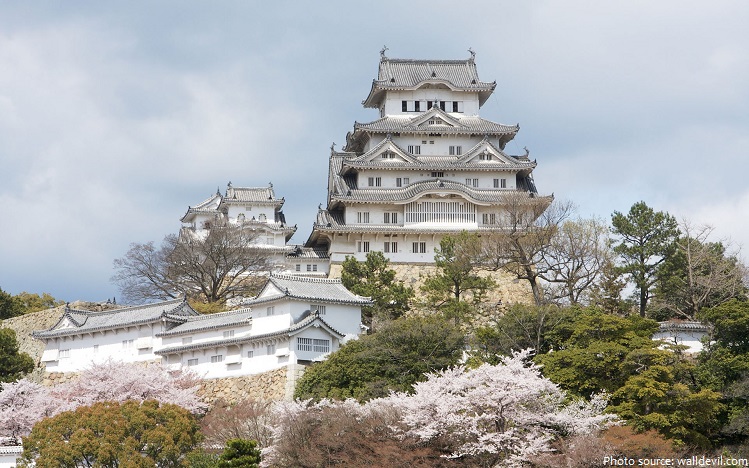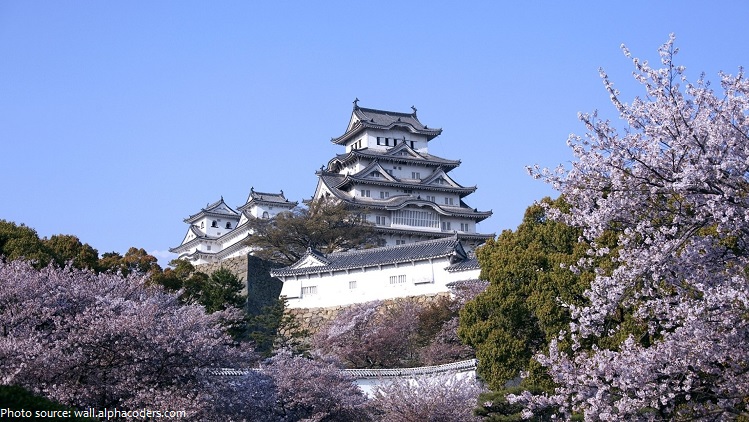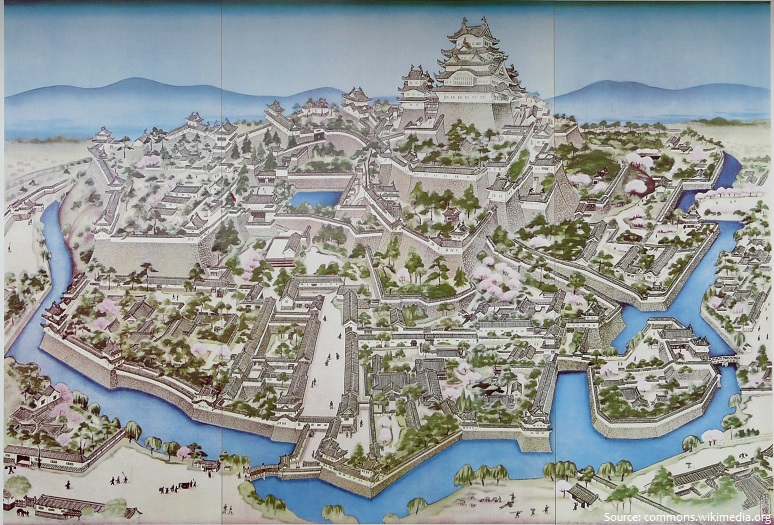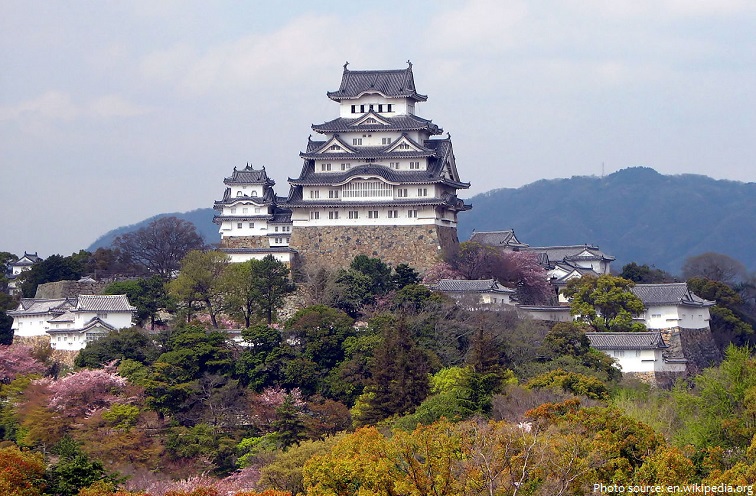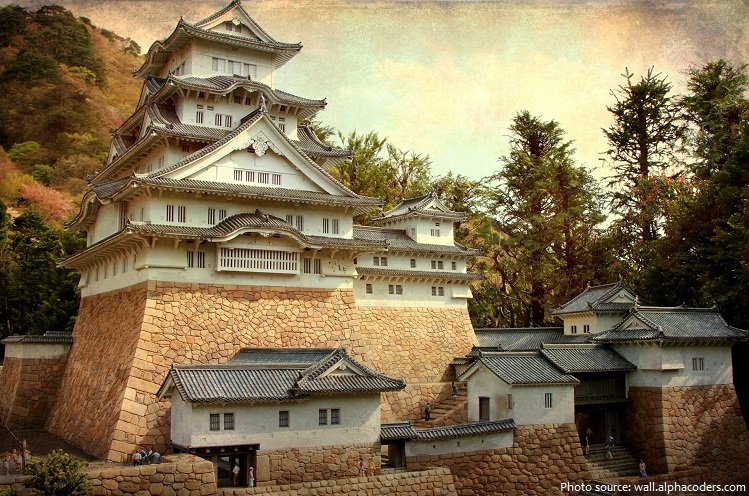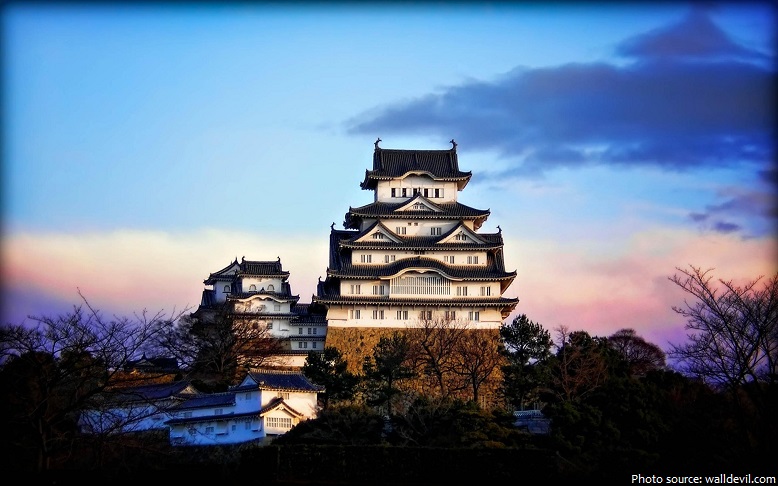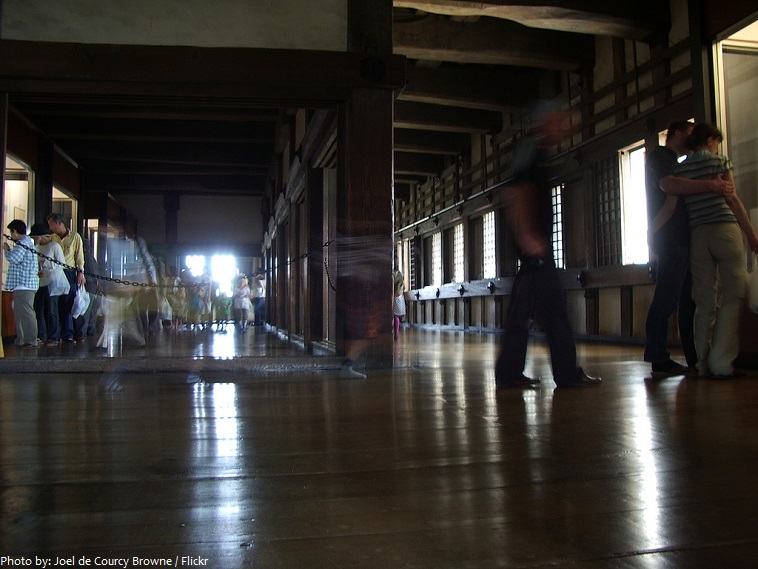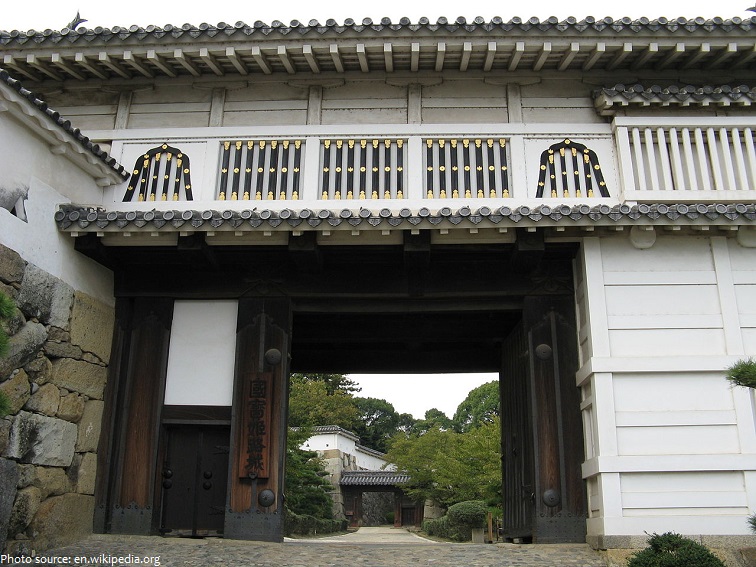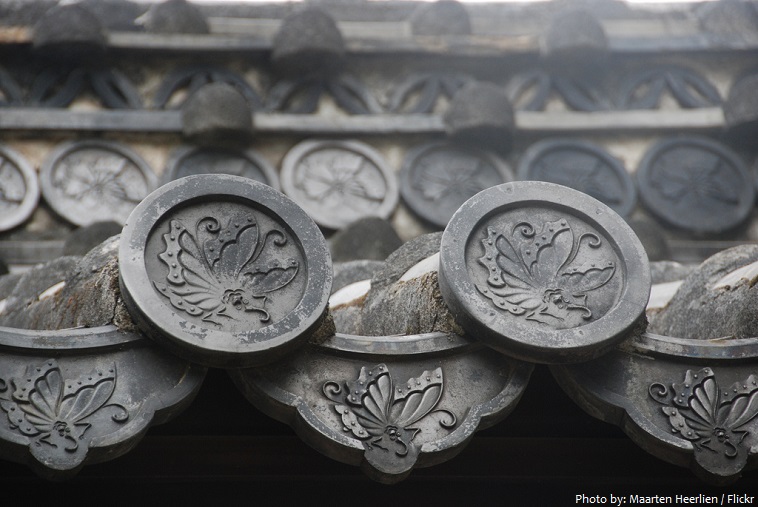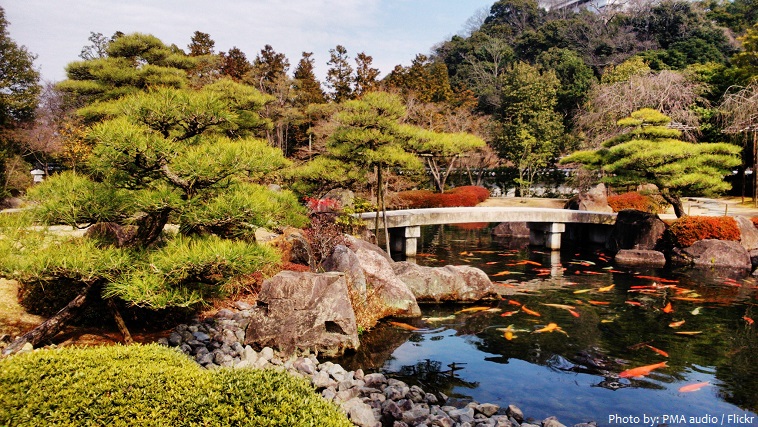Himeji Castle is a hilltop Japanese castle complex located in the city of Himeji, Hyōgo, Japan.
It is the finest surviving example of early 17th-century Japanese castle architecture, comprising 83 buildings with highly developed systems of defence and ingenious protection devices dating from the beginning of the Shogun period.
Himeji Castle is a masterpiece of construction in wood, combining function with aesthetic appeal, both in its elegant appearance unified by the white plastered earthen walls and in the subtlety of the relationships between the building masses and the multiple roof layers.
The castle is also known as Hakuro-jō (“White Egret Castle”) or Shirasagi-jō (“White Heron Castle”) because of its brilliant white exterior and supposed resemblance to a bird taking flight.
Its origins date to 1333, when Akamatsu Norimura built a fort on top of Himeyama hill.
The fort was dismantled and rebuilt as Himeyama Castle in 1346, and then remodeled into Himeji Castle two centuries later.
Himeji Castle was then significantly remodeled in 1581 by Toyotomi Hideyoshi, who added a three-story castle keep.
In 1600, Tokugawa Ieyasu awarded the castle to his son-in-law, Ikeda Terumasa for his help in the Battle of Sekigahara. Ikeda completely rebuilt the castle from 1601 to 1609, expanding it into a large castle complex.
Several buildings were later added to the castle complex by Honda Tadamasa from 1617 to 1618.
For over 400 years, Himeji Castle has remained intact, even throughout the extensive bombing of Himeji in World War II and natural disasters such as the 1995 Great Hanshin earthquake and various typhoons.
The Himeji Castle complex is located on top of a hill called Himeyama, which is 45.6 meters (150 feet) above sea level.
From east to west, the Himeji Castle complex has a length of 950 to 1,600 meters (3,120 to 5,250 feet), and from north to south, it has a length of 900 to 1,700 meters (3,000 to 5,600 feet).
The castle complex has a circumference of 4,200 meters (2.6 miles).
It covers an area of 233 hectares (576 acres).
The principal materials used in the structures are stone and wood.
The castle complex comprises a network of 83 buildings such as storehouses, gates, corridors, and turrets.
Of these 83 buildings, 74 are designated as Important Cultural Assets: 11 corridors, 16 turrets, 15 gates, and 32 earthen walls.
The highest walls in the castle complex have a height of 26 meters (85 feet).
The main keep at the center of the complex is 46.4 meters (152 feet) high, standing 92 meters (302 feet) above sea level. It is nestled in the most central courtyard among the maze of moats, walls, gates and courtyards.
Together with the main keep, three smaller subsidiary keeps form a cluster of towers.
Externally, the keep appears to have five floors, because the second and third floors from the top appear to be a single floor; however, it actually has six floors and a basement.
The first floor of the main keep has an area of 554 square meters (5,960 sq ft) and is often called the “thousand-mat room” because it has over 330 Tatami mats. The second floor has an area of roughly 550 square meters (5,900 sq ft). The third floor has an area of 440 square meters (4,700 sq ft) and the fourth floor has an area of 240 square meters (2,600 sq ft). The fifth floor has an area of 180 square meters (1,930 sq ft). The final floor, the sixth floor, has an area of only 115 square meters (1,240 sq ft).
The castle complex included three moats, one of which—the outer moat—is now buried.
Loopholes in the shape of circles, triangles, squares, and rectangles are located throughout Himeji Castle, intended to allow defenders armed with tanegashima or archers to fire on attackers without exposing themselves.
The castle complex originally contained 84 gates; at present, 21 gates from the castle complex remain intact.
One of the castle’s most important defensive elements is the confusing maze of paths leading to the castle’s keep.
Feudal family crests are installed throughout the architecture of the building, signifying the various lords that inhabited the castle throughout its history.
When the han feudal system was abolished in 1871, Himeji Castle was put up for auction. The castle was purchased by a Himeji resident for 23 Japanese yen (about 200,000 yen or US$2,258 today). The buyer wanted to demolish the castle complex and develop the land, but the cost of destroying the castle was estimated to be too great, and it was again spared.
Himeji was heavily bombed in 1945, at the end of World War II, and although most of the surrounding area was burned to the ground, the castle survived intact.
Joining the castle complex is Koko-en Garden, a Japanese garden created in 1992 to commemorate Himeji city’s 100th anniversary.
Himeji Castle is the largest and most visited castle in Japan, and it was registered in 1993 as one of the first UNESCO World Heritage Sites in the country.
Five structures of the castle are designated National Treasures: The main keep, northwest small keep, west small keep, east small keep, and I, Ro, Ha, Ni-corridors and kitchen.
The area within the middle moat of the castle complex is a designated Special Historic Site.
In order to preserve the castle buildings, it underwent restoration work starting in April 2010, and reopened to the public on March 27, 2015.
It is the most visited castle in Japan, receiving over 2,860,000 visitors in 2015.
Himeji Castle is associated with a number of local legends.
The castle has been featured extensively in foreign and Japanese films, including the James Bond movie “You Only Live Twice” (1967), and Akira Kurosawa’s Kagemusha (1980) and Ran (1985).
In the video games Civilization Revolution and Civilization V, Himeji Castle is available to build as a world wonder.
